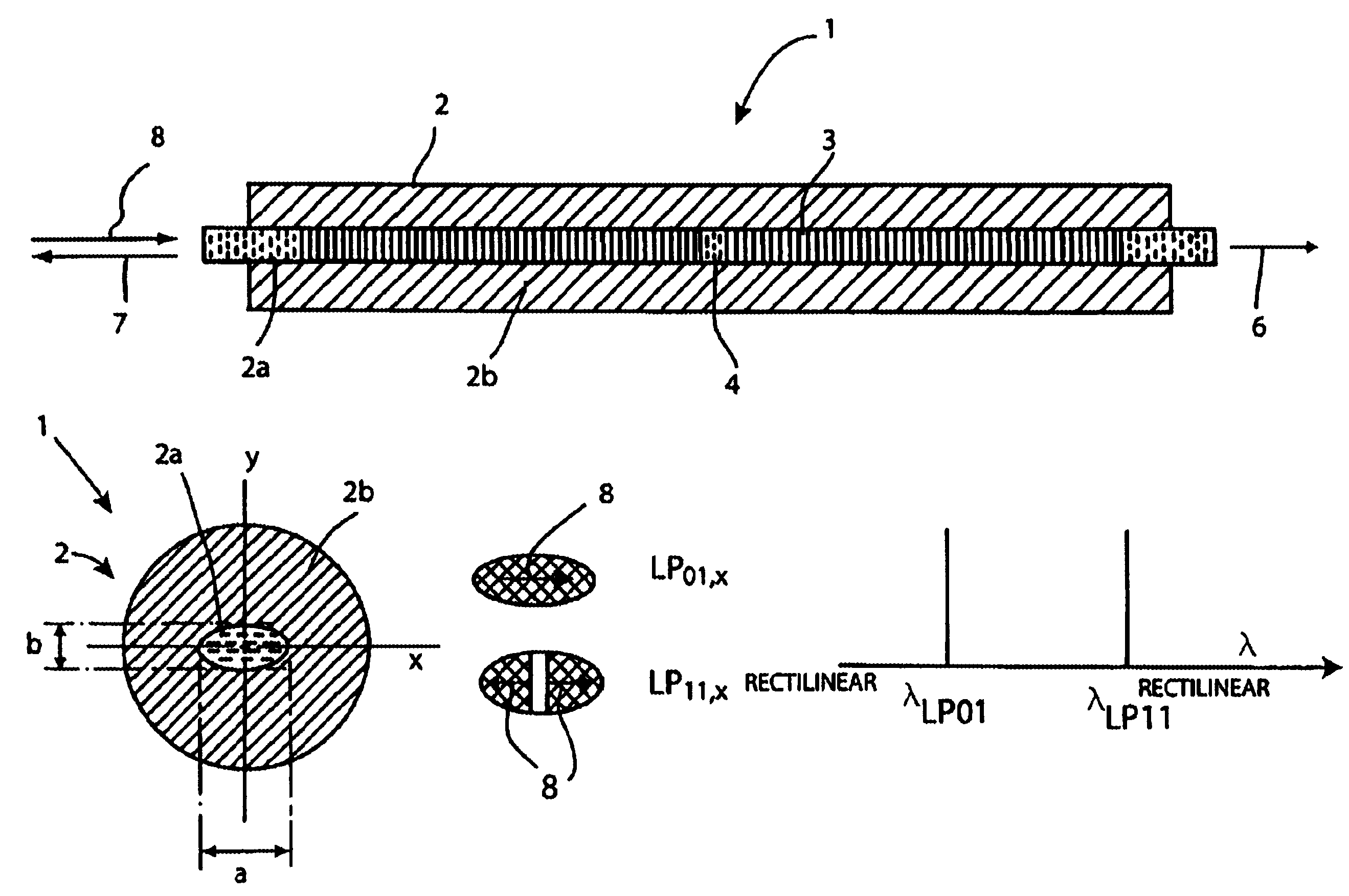Anisotropic distributed feedback fiber laser sensor
a distributed feedback and fiber laser technology, applied in the field of fiberoptical measurement technology, can solve the problems of limited dynamic range, isotropic pressure, exclusive use, etc., and achieve the effect of enlarged dynamic range and very simple production
- Summary
- Abstract
- Description
- Claims
- Application Information
AI Technical Summary
Benefits of technology
Problems solved by technology
Method used
Image
Examples
Embodiment Construction
[0023]FIGS. 1a and 1b diagrammatically show the sensor part of a DFB fiber laser sensor 1 according to the invention. The laser 1 comprises a laser-amplifying fiber 2 for example having an elliptical core 2a and a round fiber cladding 2b. Linear polarization axes x, y are prescribed by the long principal axis a and the short principal axis b of the core 2a. The core 2a is doped with rare earth ions. The type of ions depends on the desired emission wavelength range of the laser 2. Erbium / ytterbium- or erbium-doped laser-amplifying fibers 2 are preferably used, whose emission lies in the range of between about 1520 nm and 1560 nm. Instead of being doped with erbium, the fiber can also be doped with other rare earth ions, e.g. praseodymium (emission around 1300 nm), neodymium (emission around 1060 mm) or thulium (emission around 810 nm). The wavelength of the pumping laser 13 (FIGS. 8, 9) must be adapted correspondingly.
[0024]The laser resonator 3 is formed by an individual Bragg grati...
PUM
 Login to View More
Login to View More Abstract
Description
Claims
Application Information
 Login to View More
Login to View More - R&D
- Intellectual Property
- Life Sciences
- Materials
- Tech Scout
- Unparalleled Data Quality
- Higher Quality Content
- 60% Fewer Hallucinations
Browse by: Latest US Patents, China's latest patents, Technical Efficacy Thesaurus, Application Domain, Technology Topic, Popular Technical Reports.
© 2025 PatSnap. All rights reserved.Legal|Privacy policy|Modern Slavery Act Transparency Statement|Sitemap|About US| Contact US: help@patsnap.com



